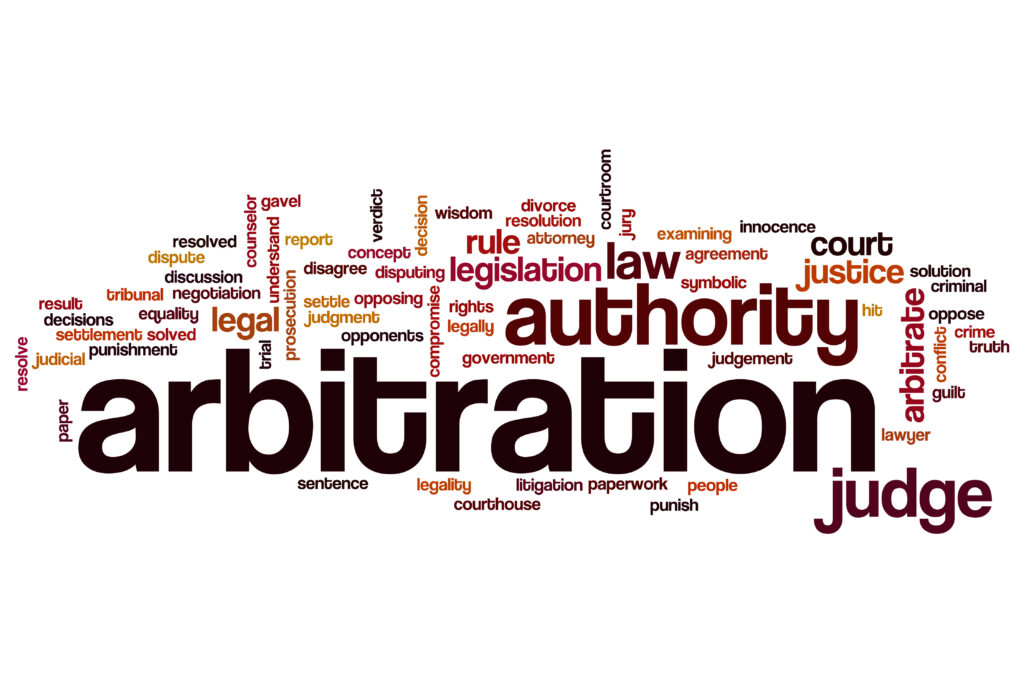By Andrew Ness
Witness Statements Gain Popularity in U.S. Arbitrations
Of the many innovations gaining wider acceptance in U.S. arbitrations, use of fact witness statements in lieu of direct examination is leading the pack. For those considering the use of witness statements in an upcoming arbitration, this post outlines the procedures generally adopted, and the key pros and cons of using witness statements for fact witnesses.

Procedure for Using Witness Statements
Witness statements are used to replace the direct examination of witnesses. The witness statement is prepared well in advance of the merits hearing. Both parties exchange witness statements a month or more before the hearing. Usually, but not always, there is an opportunity to exchange reply witness statements, to rebut factual statements contained in the opposition’s witness statements. These reply statements are usually from those who gave initial witness statements, although new witnesses needed to support a factual rebuttal point may be included.
Witness statements can be utilized for all or only some fact witnesses, reserving the right to have key witnesses testify live on direct, if the procedural order allows. Witness statements are sometimes referred to as affidavits, but, unlike affidavits, there is generally no requirement that the statement be under oath and notarized, because this element is handled at the hearing.
At the hearing, the usual procedure is: (1) The witness takes the stand and is sworn. (2) He or she confirms and adopts under oath the witness statement (and reply statement, if any) and (3) He or she identifies any errors or corrections needed in the statement.
A short period (usually from 5 to 15 minutes) is allowed for a very compressed direct examination, generally focused on establishing the basis for the witness’s testimony – his or her background, role in the disputed events and extent of personal knowledge. There also may be time for the witness to highlight a few key points of the testimony. The typical ground rule is that nothing new may be added during this introduction not included in the witness statement. The only exception is for a new fact that only came to light or became relevant after submitting the reply witness statement.
Witness statements have long been used extensively in international arbitration, and the European arbitrators’ term for this introductory opportunity is “seat warming.” This accurately conveys that its primary purpose is to allow the witness to introduce himself or herself to the arbitrators and get comfortable with the setting and the role of being a witness. After seat warming, the witness is turned over for cross-examination in the usual manner, followed by redirect and (when needed) re-cross.
Benefits of Using Witness Statements
The key benefit of using witness statements instead of traditional direct testimony is that it shortens the hearing considerably, since it eliminates almost all time needed for direct. As hearing time is the most expensive time in an arbitration, this generates significant cost savings for both parties. The net time savings varies, depending primarily on how long the avoided direct would have taken, but can approach 40% or even 50% of the total time needed for fact witness testimony.
A well-prepared witness statement will also tell the witness’s story clearly and logically, often better than through direct examination where the witness’s story comes out piecemeal through questioning. Depending on how articulate (or well-rehearsed) the witness is, direct examination can often be choppy and require the questioner to backtrack to bring out a part of the story that the witness failed to mention in the initial answer.
Witness statements also reduce (if not eliminate) the need to depose witnesses in advance, another source of cost savings. Instead, the cross-examiner can prepare the cross efficiently, knowing precisely what the witness is going to testify to, avoiding the need to prepare questions in areas that the witness does not intend to address. That said, given arbitration’s inherent flexibility, the cross-examiner is not held to the scope of the testimony contained in the witness statement, and is allowed to explore relevant additional points where the witness has personal knowledge.
Finally, witness statements allow the arbitrators to review the fact testimony in advance and be better informed as to the key fact issues in the dispute and better prepared with their own questions. I generally read a witness statement in advance twice. The first time is in the weeks before the hearing, but I review it again the evening before the witness is to testify so the testimony is fresh in mind.
Problems with Using Witness Statements
The most common complaint counsel make about written witness statements is that they often require just as much effort as preparing the witness for traditional direct examination. This can be true, but that does not mean there are no cost savings involved. The time and cost savings are realized at the hearing, when the room is full of hourly billers, not in the preparation time, which usually involves only one or two attorneys billing time.
Some arbitrators do not like witness statements because they are generally drafted by the attorneys and therefore are felt to be unreliable indicators of the facts that the witness could more accurately present in his or her own words. It is true that preparing a coherent and complete witness statement usually requires input from counsel (which is allowed). It also true that counsel can sometimes succumb to the temptation of enhancing the written testimony to a greater or lesser extent to tell a better story.
But this comes with a high risk. A good cross-examination, that effective engine of exposing truth, can probe whether the witness has a basis to support suspect assertions in the witness statement. A pattern of overstating the facts or offering sweeping but poorly supported conclusions can generally be revealed on cross, whether through documents containing contradictory statements or questions exposing the witness’s lack of underlying knowledge. And once such a pattern comes to light, the witness’s credibility will be greatly damaged, if not destroyed altogether. This is an inherent check on attorneys putting words in the witness’s mouth.
Finally, in some situations counsel can have valid concern that presenting the testimony in writing will eliminate a key opportunity for the arbitrators to evaluate not just credibility, but intent. For example, when a dispute involves allegations of fraud or bad faith, the intentions of those involved are of much greater importance than when the issue is breach of contract. Providing the witness an uninterrupted opportunity to explain his or her intentions (or the perceived intentions of others) live and orally can be sufficiently important to avoid use of a written witness statement.
Many arbitrators would counter this by noting that, compared to what may be a carefully rehearsed direct examination, what the witness has to say when challenged by a hostile examiner during cross is far more important in assessing factors like intent and credibility. In other words, the absence of oral direct will not make a significant difference, even on matters of intent, since it’s the cross that is key. But if this is a concern, the better remedy is to have the procedural order allow for a limited number of live fact witnesses by each side, rather than abandon use of witness statements entirely.
Conclusion
If you do not have experience using written fact witness statements, you are likely to encounter a proposal (whether from opposing counsel or the arbitrators) to utilize them. Rather than reflexively rejecting them as new and untried, hopefully this guide will enable you to make a sound decision on the use of witness statements that best supports your client’s interests in an efficient and cost-effective arbitration process.
For more information on this topic, see Chapter 10. VIII, “Fact Witness Statements” in Construction Arbitration the Advocate’s Practical Guide (ABA Press 2023)( listed on this website’s recommendations & resources page. (available at http://americanbar.org}.

